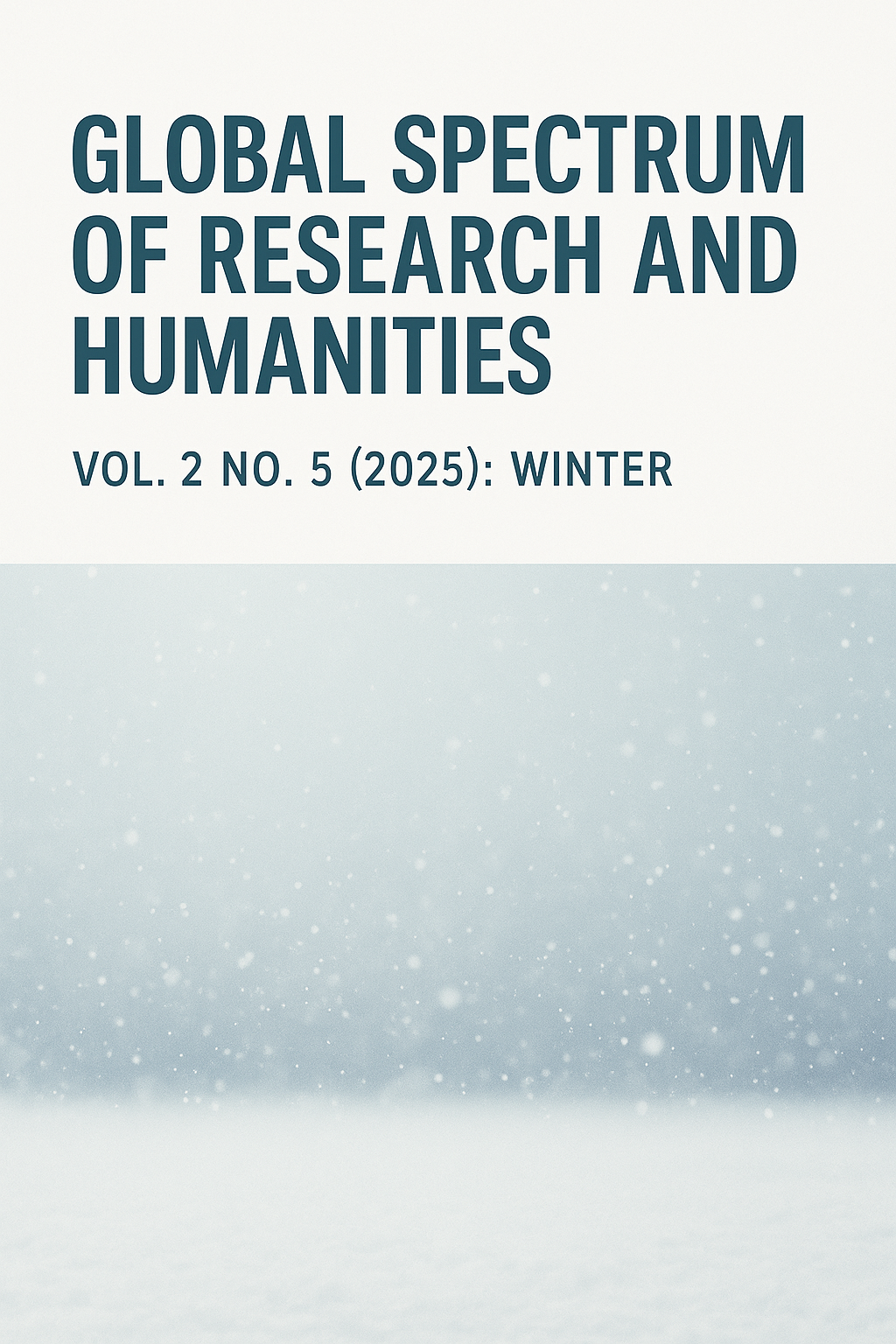Latin borrowings; Greek-derived words; English lexicon; etymology; language influence; terminology; language evolution; classical roots.
DOI:
https://doi.org/10.69760/gsrh.0250205007Keywords:
Latin borrowings, Greek-derived words, English lexicon, etymology, language influence, terminology, language evolution, classical rootsAbstract
This article provides a comprehensive analysis of the role of Latin and Greek in the development of English vocabulary and semantics. We trace the historical phases from Old English to the present, highlighting the entry and domain-specific use of Latin- and Greek-derived words. For example, in early medieval England, Christian missionary activity introduced Latin religious terms (e.g., altar, Mass) into English (Crystal, 2003). After the Norman Conquest and during the Renaissance, there was a massive influx of classical vocabulary, forming stable terminological foundations in medicine, science, law, philosophy, and education (Algeo & Pyles, 2010; Crystal, 2003). In the modern era, globalization and scientific advancement have further entrenched these terms in English, serving as international standards (e.g., anemia, curriculum, laboratory) (Crystal, 2003; Blankenship, 2023). Our findings indicate that a majority of the English lexicon consists of Latin and Greek roots, which ensure precision and continuity in expression. Adaptation processes include phonetic simplification (e.g., philosophia → philosophy) and semantic shifts (broadening of agenda, narrowing of mania). Overall, Latin and Greek borrowings constitute an active, productive core of modern English, contributing to its status as a global scientific and cultural language.
References
Algeo, J. (2010). The Origins and Development of the English Language (6th ed.). Cengage Learning.
Barber, C. (1993). The English Language: A Historical Introduction. Cambridge University Press.
Baugh, A. C., & Cable, T. (2012). A History of the English Language (6th ed.). Routledge.
Crystal, D. (2003). The Cambridge Encyclopedia of the English Language. Cambridge University Press.
Durkin, P. (2009). The Oxford Guide to Etymology. Oxford University Press.
Hock, H. H., & Joseph, B. D. (2009). Language History, Language Change, and Language Relationship. Mouton de Gruyter.
Hughes, G. (2000). A History of English Words. Blackwell Publishing.
Katamba, F. (1993). Morphology. Macmillan Education UK.
Kennedy, G. A. (1963). The Art of Rhetoric in the Roman World. Princeton University Press.
Labov, W. (1994). Principles of Linguistic Change: Internal Factors. Blackwell.
McArthur, T. (1992). The Oxford Companion to the English Language. Oxford University Press.
McMahon, A. (1994). Understanding Language Change. Cambridge University Press.
Mugglestone, L. (2006). The Oxford History of English. Oxford University Press.
Nevalainen, T., & Traugott, E. C. (2012). The Oxford Handbook of the History of English. Oxford University Press.
Pyles, T., & Algeo, J. (1993). The Origins and Development of the English Language. Harcourt Brace.
Robins, R. H. (1997). A Short History of Linguistics (4th ed.). Routledge.
Romaine, S. (2000). Language in Society: An Introduction to Sociolinguistics (2nd ed.). Oxford University Press.
Samuels, M. L. (1984). Linguistic Evolution: With Special Reference to English. Cambridge University Press.
Simpson, J. A., & Weiner, E. S. C. (1989). The Oxford English Dictionary (2nd ed.). Oxford University Press.
Strang, B. M. H. (1970). A History of English. Methuen & Co.
Thomas, L. (2002). Language, Society and Power: An Introduction. Routledge.
Trask, R. L. (1996). Historical Linguistics. Arnold.
Trudgill, P. (2000). Sociolinguistics: An Introduction to Language and Society. Penguin Books.
Weinreich, U. (1953). Languages in Contact: Findings and Problems. Linguistic Circle of New York.
Yule, G. (2020). The Study of Language (7th ed.). Cambridge University Press.
Downloads
Published
Issue
Section
License
Copyright (c) 2025 Global Spectrum of Research and Humanities

This work is licensed under a Creative Commons Attribution-NonCommercial-NoDerivatives 4.0 International License.




